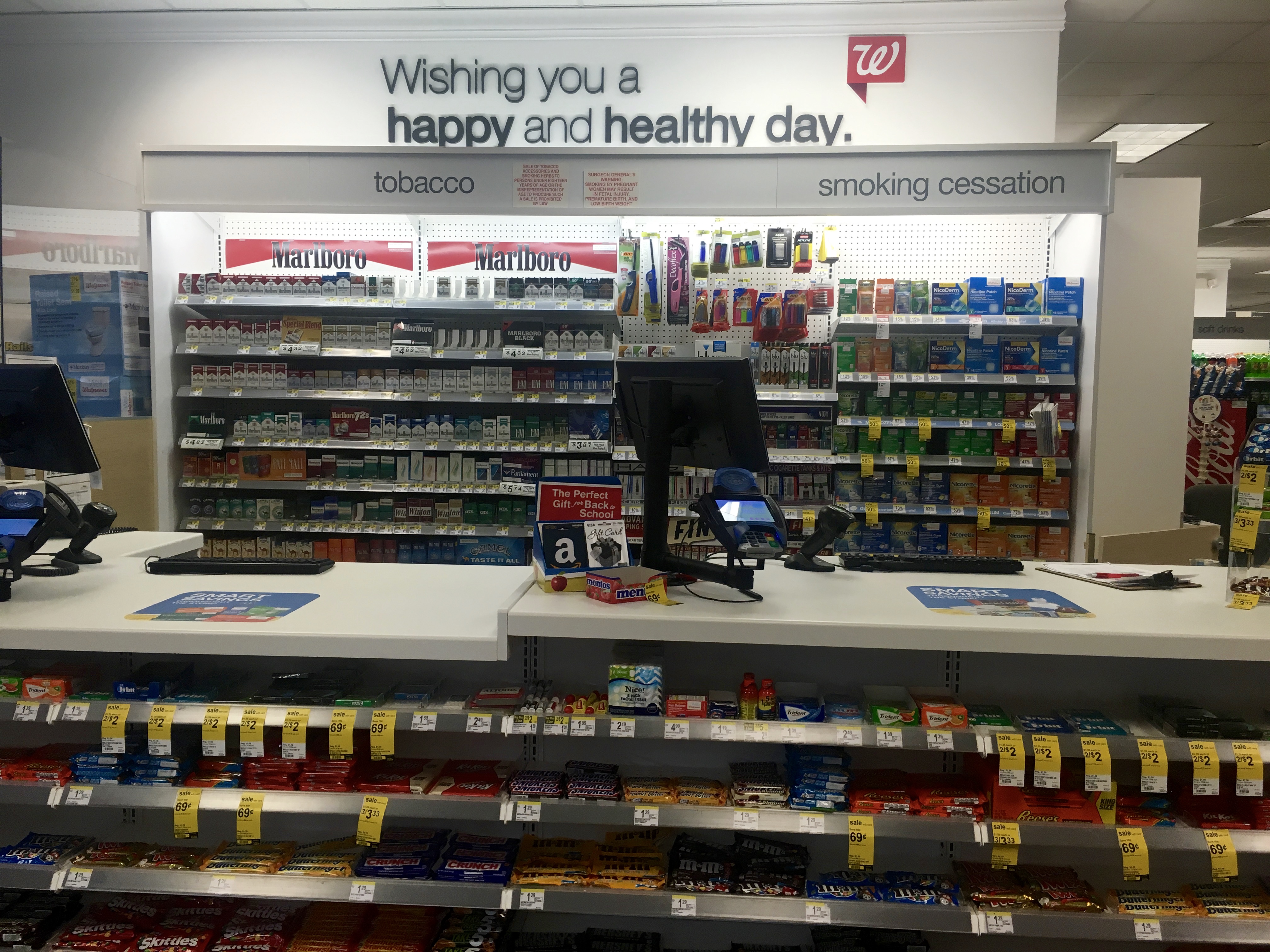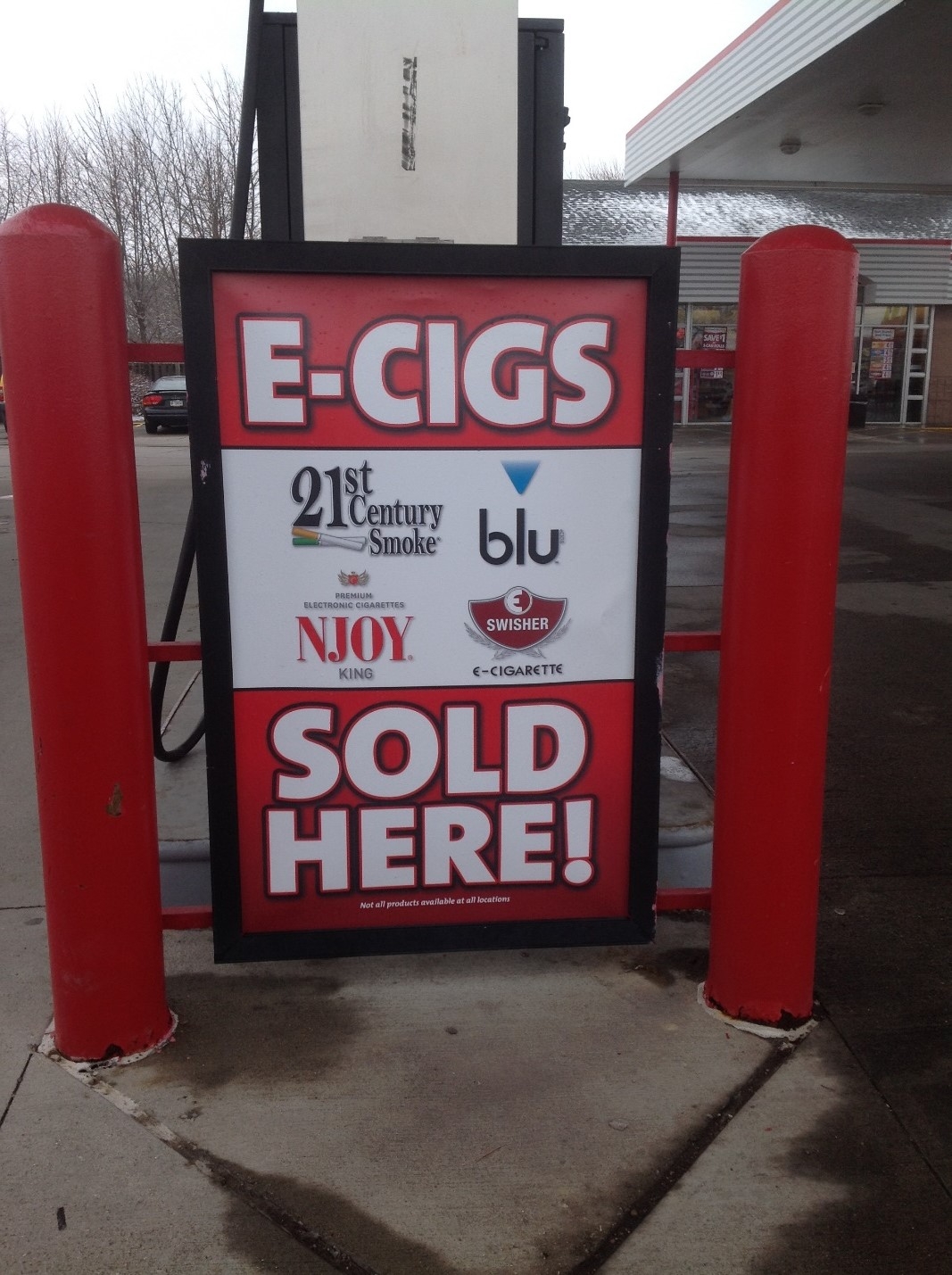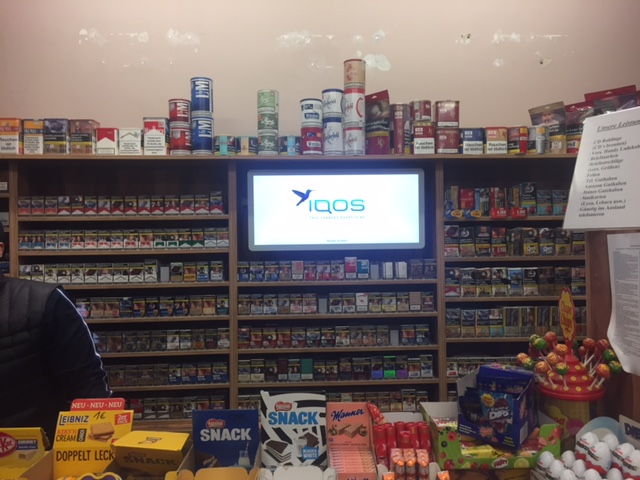Welcome to CounterTobacco.org’s “News and Research Roundup!” Each month we post a summary of the latest research, reports, and news stories on counteracting tobacco product sales and marketing at the point of sale (POS). Keeping up with what’s happening in the POS movement all across the country can help you choose policies and strategies that work best for your community. New research can help provide support for your work and evidence for the importance of the “War in the Store.” Have a story you don’t want us to miss? E-mail it to us!
New Research
Pharmacies and Retailer Density
- Evaluating the impact and equity of a tobacco-free pharmacy law on retailer density in New York City neighborhoods, Tobacco Control
- New York City’s policy prohibiting the sale of tobacco in pharmacies is predicted to decrease retailer density by 6.8% across the city and by up to 15% in some neighborhoods.The steeper decreases in density in NYC will be seen in largely higher-income, white neighborhoods, while neighborhoods with more Hispanic residents and residents with lower levels of education will see less substantial reductions. However, tobacco-free pharmacy policies can be paired with other retailer restrictions, such as neighborhood-based retailer caps, as NYC is also implementing, or restricting stores near schools, which can help reduce income- and race-based disparities in retailer density.
- Learn more about policies to reduce retailer density.

- US Food and Drug Administration Inspection of Tobacco Sales to Minors at Top Pharmacies, 2012-2017, Jama Pediatrics
- This study analyzed FDA sales to minors violations at pharmacy chains across the U.S. (CVS, Rite Aid, Walgreens, and 50 other pharmacy chains) between 2012-2017, and found an overall violation rate of 7.7%. However, of all of the pharmacies, Walgreens had the highest rate of sales to minors at 10.3%, followed by other chains at 7.6%, CVS at 5.5%, and Rite Aid at 4.2%.
- News Story: Which drug stores sell tobacco to minors? A new paper investigates, SCOPE
- Learn more about tobacco free pharmacies.
- Estimating the effect of a potential policy to restrict tobacco retail availability in New Zealand, Tobacco Control
- This study modeled the effects of a potential policy in New Zealand that would prohibit any new retailers from selling tobacco but exempt all existing retail outlets. Researchers found that the total number of tobacco outlets would be cut in half by 2032 and reduced by 95% by 2072.
- Learn more about policies restricting tobacco availability.
Youth Use
- Racial/Ethnic Disparities in Tobacco Product Use Among Middle and High School Students — United States, 2014–2017, CDC MMWR
- Data from the 2014-2017 National Youth Tobacco Surveys show disparities in tobacco use among U.S. youth by race/ethnicity. Ever-use of tobacco is highest among Native Hawaiian/Pacific Islanders (45.1%), American Indian/Alaska natives (43.8%), and multiracial youth (38.2%). E-cigarettes were the most commonly reported product ever used among all groups except among black youth, who reported higher ever-use of cigars (19.9%), and American Indian/Alaska Native youth, who reported higher ever-use of cigarettes (31.4%). Native Hawaiian/Pacific Islanders and American Indian/Alaska Native youth also had the highest rates of current tobacco use at 23.4% and 20.6%, respectively. To address these disparities, policymakers must both ensure that evidence-based interventions reach all population groups and include targeted strategies.
- Marketing Exposure Recall is Associated with Past 30-Day Single, Dual, Polytobacco Use Among US Adolescents, Nicotine & Tobacco Research
- This analyzed data from the 2014 National Youth Tobacco Survey and found that middle and high school students who were exposed to tobacco marketing more frequently had a greater risk of dual or polytobacco than their peers who were exposed to tobacco marketing less frequently. Exposure to tobacco marketing is also associated with single tobacco product use, and this study shows that a positive relationship between the amount of tobacco marketing exposure and the number of tobacco products that youth use.
E-Cigarettes
 National and State-Specific Unit Sales and Prices for Electronic Cigarettes, United States, 2012-2016, Preventing Chronic Disease
National and State-Specific Unit Sales and Prices for Electronic Cigarettes, United States, 2012-2016, Preventing Chronic Disease
- Retail scanner data from 2012-2016 across the 48 contiguous states and Washington DC shows that as e-cigarette product prices decreased, sales increased. Unit sales of all types of e-cigarettes (rechargeables, disposables, prefilled cartridges, and e-liquids) increased over this time period, and the price for rechargeable e-cigarettes, disposable e-cigarettes, and prefilled cartridges decreased. In 2016, sales were highest for prefilled cartridges, which were also the lowest price on average at $14.36 per unit. On a state level, prices decreased in 39 states for rechargeables, 31 states for disposables, 20 states for prefilled cartridges, and 8 states for e-liquids, while sales rose in at least one of these categories for each state.
- Trends in Unit Sales of Flavored and Menthol Electronic Cigarettes in the United States, 2012-2016, Preventing Chronic Disease
- Retail scanner data from convenience stores, supermarkets, drug stores, mass merchandisers, dollar stores, club stores, and US Department of Defense commissaries shows that from 2012-2016, the proportion of e-cigarette sales that were for flavored e-cigarettes across the U.S. increased from 2.4% to 19.8%. By 2016, more than half of total e-cigarette sales were either flavored or menthol. Sales of flavored e-cigarettes did not increase in only 4 states (North Dakota, South Dakota, Utah, and Vermont). From 2015-2016, flavored e-cigarette sales decreased only in Rhode Island, and menthol e-cigarette sales decreased only in Minnesota. Overall, the number of unique e-cigarette products on the market increased 190% from 2012 to 2016, with the proportion that are flavored increasing from 11% to 44%. Note that this data does not include sales from vape shops or the internet.
- Prevalence and Distribution of E-Cigarette Use Among U.S. Adults: Behavioral Risk Factor Surveillance System, 2016, Annals of Internal Medicine
- Data from the 2016 Behavioral Risk Factor Surveillance System found that 4.5% of U.S. adults were current e-cigarette users. Of those current users, 15% had never smoked cigarettes. The prevalence of current e-cigarette use was also higher among young adults, with 9.2% of adults ages 18-24 reporting current use and 51.2% of all current users being under the age of 35. Use was also higher among men, LGBT persons, current cigarette smokers, and persons with chronic health conditions.
- Electronic cigarette chemicals transfer from a vape shop to a nearby business in a multiple-tenant retail building, Tobacco Control
- When people using e-cigarettes exhale aerosol, it can product a residue that contains nicotine, other alkaloids, and tobacco-specific nitrosamines on nearby surfaces. This study tested the build-up of this residue on commonly used materials like towels and paper towels that were placed in businesses near a vape shop. They found that in this multi-tenant building, the residue for exhaled aerosol, including detectable levels of nicotine, tobacco alkaloids, and nitrosamines, was present in businesses adjacent to a vape shop after one day of exposure and levels increased over time. The researchers note that while the amount of residue in neighboring businesses may vary depending on the building and HVAC system, the residue presents a potential environmental hazard that should be regulated and that store owners and mall tenants near vape shops should be aware of.
- Learn more about e-cigarettes at the point of sale.
Heated Tobacco Products and “Reduced Risk” Claims
-

Video ad for IQOS in Berlin Germany Light and mild redux: heated tobacco products’ reduced exposure claims are likely to be misunderstood as reduced risk claims, Tobacco Control
- This study examined Philip Morris International’s (PMI) Perception and Behavior Assessment Studies evaluating perceptions of reduced risk claims for heated tobacco products. They found both qualitative and quantitative evidence that adult consumers in the U.S. perceive “reduced exposure” claims as “reduced risk.” Based on this information and the history of the use of “light” and “mild” descriptors on tobacco products, the researchers recommend that the FDA not allow PMI to market heated tobacco products as “reduced exposure” to avoid misleading consumers.
- Impact of modified risk tobacco product claims on beliefs of US adults and adolescents, Tobacco Control
- Claims of lower risk (e.g. less harmful than cigarettes) and claims of lower exposure (e.g. fewer chemicals than cigarettes) both had similar effects of lower perceived quantity of harmful chemicals and lower perceived health risks among adults and adolescents. Claims of lower risk also led to higher susceptibility to use of the product. This indicates that claims of lower exposure may be misleading.
- Heat-not-burn tobacco products: a systematic literature review, Tobacco Control
- The conclusion to this study states, “Peer-reviewed evidence on heated tobacco products indicates that HnB [“Heat-not-burn” tobacco products] are effective nicotine delivery devices that expose users and bystanders to substantially fewer harmful and potentially harmful compounds than smoking cigarettes. The evidence is primarily drawn from tobacco industry data and lacks research on long-term HnB use effects on health. The HnB harm profile needs to be confirmed by independent research and compared with other alternative nicotine products that have reduced health risk exposure profiles.”
Industry News
- Juul expands e-cig market share gap with Reynolds’ Vuse, Winston-Salem Journal
- 4 Insights Into Altria’s Future, CSP Daily News
- Circle K Tobacco Club Burns Bright, CSP Daily News
- FDA committee recommends moving forward with Camel Snus review, Winston-Salem Journal
- Juul’s leading e-cig market share may be leveling off, Winston-Salem Journal
POS Policy in the Media
Tobacco Free Pharmacies
- ECU research: Chain pharmacies too often sell tobacco products to minors, WITN
- NYC’s tobacco-free pharmacy law substantially reduces retailer density, yet impact unequal, Medical Press
Tobacco 21
- Phillips County, Ark. Raises Legal Age to Buy Tobacco to 21, OzarksFirst.com
- New San Antonio Tobacco Purchasing Rules Go Into Effect Next Month, Spectrum News
- Plymouth: Board of Health Raises Minimum Age for Purchasing Tobacco Products, 95.9 FM WATD
- Minnetonka votes to raise tobacco sales age to 21, Fox 9 News
- Avon council approves measure that raises the tobacco purchasing age to 21, Vail Daily
E-Cigarettes
- 1 in 11 Teens Have Vaped Marijuana, New Study Shows, Fortune
- Feds’ new campaign against youth vaping ‘epidemic’ targets middle and high schoolers, USA Today
- LA County Supervisor Proposes Restrictions on E-cigs, NBC Los Angeles
- D.A. Cracks Down on Juul and E-Cigarette Retailers, New York Times
- Almost one in 20 U.S. adults now use e-cigarettes, Reuters
- FDA Commissioner Gottlieb says US weighing ban on online e-cigarette sales, CNBC
Product Placement
- Callaway Becomes First Local City to Move ‘E-Cigs’ Behind Counters, MyPanhandle.com
- Emanuel plans new sales tax on e-cigarettes, wants vaping products under counter, Chicago Sun-Times
- Tobacco display ban linked to drop in children buying cigarettes in shops, The Guardian
Moratoriums
- Minneapolis bans new tobacco shops for a year, Star Tribune
- Brooklyn Center, Minn. Places Moratorium on New Tobacco Retailers Ahead of Age Increase, HalfWheel
Find more stories in last month’s News and Research Roundup.
Know of a story that we missed? Email us, and we’ll be sure to include it in next month’s roundup!


